EPA gasoline powered engine all terrain compact remote controlled flail mulcher
Vigorun Tech’s Innovative All-Terrain Solution
The EPA gasoline powered engine all terrain compact remote controlled flail mulcher from Vigorun Tech stands out in the market with its robust performance and versatile applications. Equipped with a powerful Loncin twin-cylinder gasoline engine, this machine operates at a rated power of 18 kW at 3600 rpm, delivering impressive efficiency for various tasks.
The 764cc engine not only provides strong performance but is also designed with a clutch that engages only upon reaching a predetermined rotation speed. This feature enhances the operational control and efficiency, making it an ideal choice for both professional landscapers and homeowners looking for reliable equipment.
In addition to the powerful engine, the mulcher’s design incorporates advanced safety features. The built-in self-locking function ensures that the machine remains stationary without throttle input, significantly reducing the risk of unintended movement and enhancing overall user safety during operation.
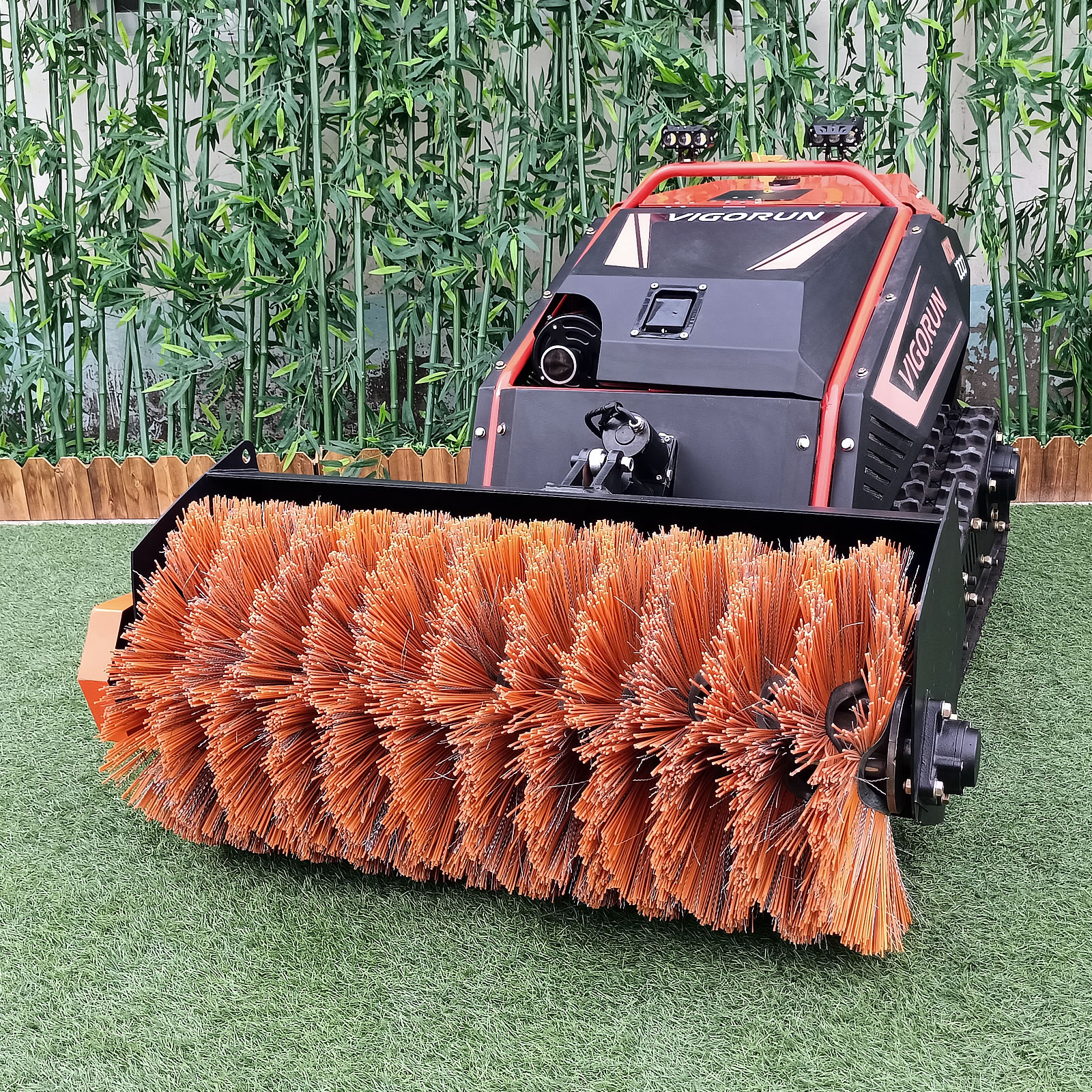
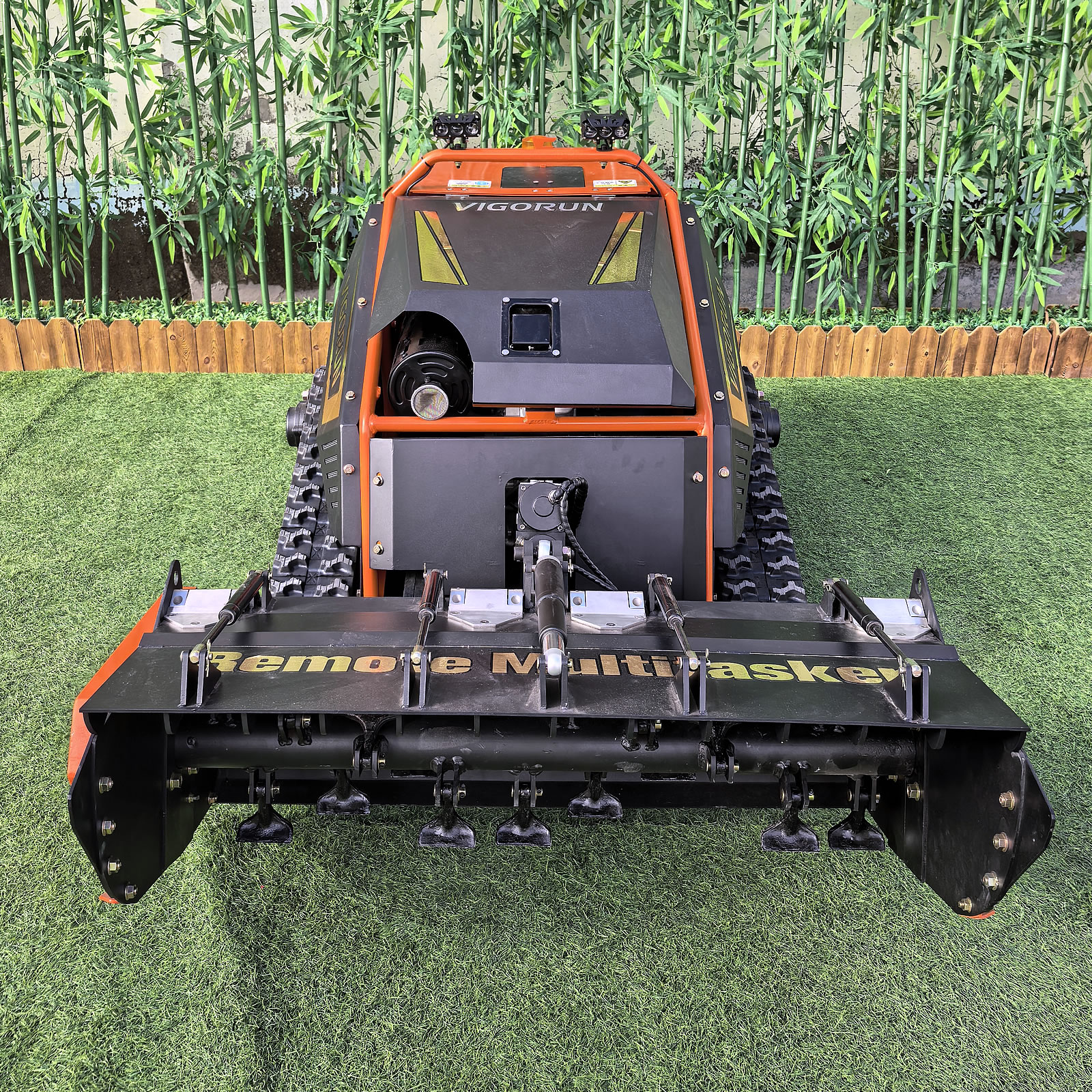
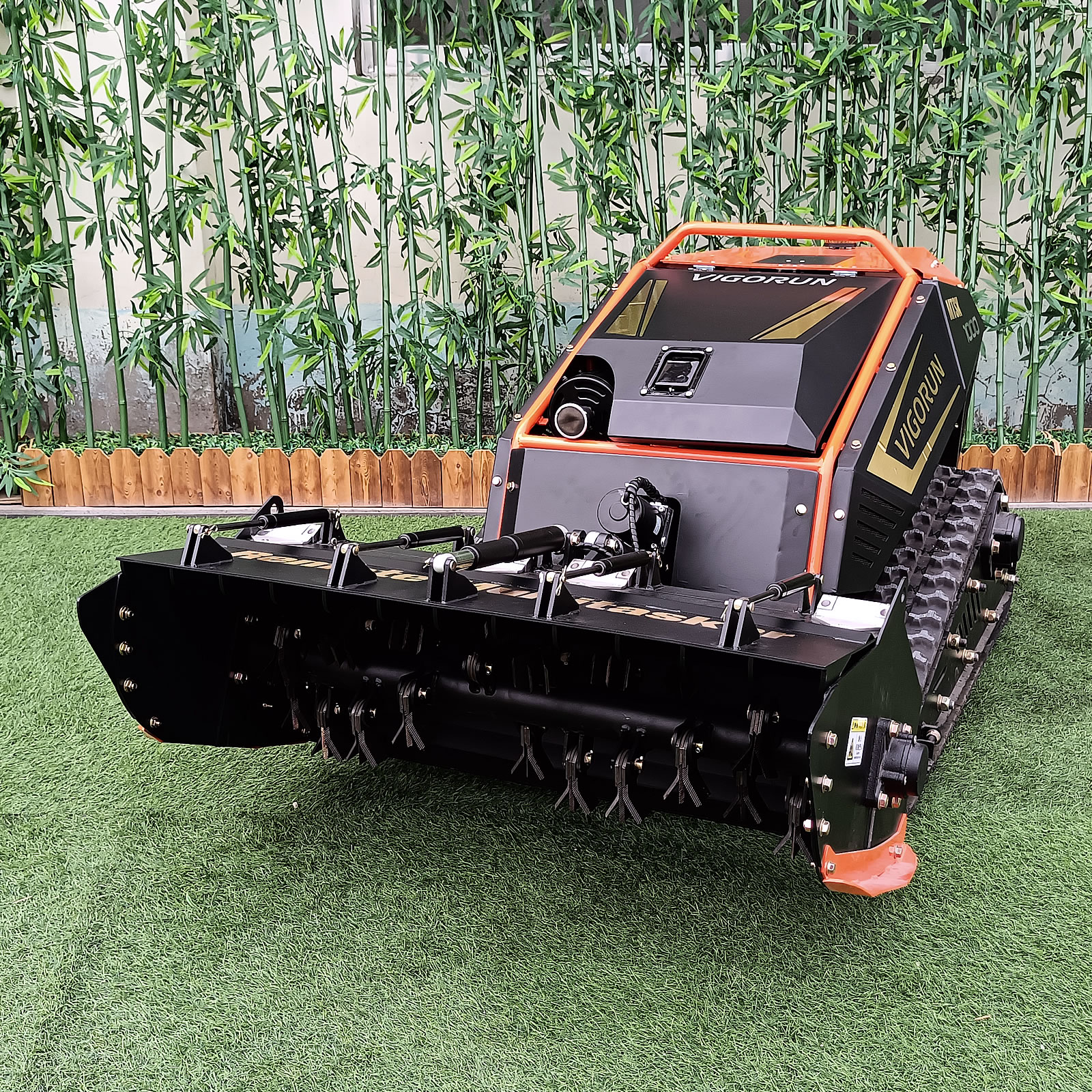
Versatility and Performance Under Any Condition
The EPA gasoline powered engine all terrain compact remote controlled flail mulcher is engineered for multi-functional use, accommodating a variety of interchangeable front attachments. Users can equip the machine with options such as a 1000mm-wide flail mower, hammer flail, or forest mulcher, making it suitable for heavy-duty grass cutting, shrub clearing, and vegetation management.
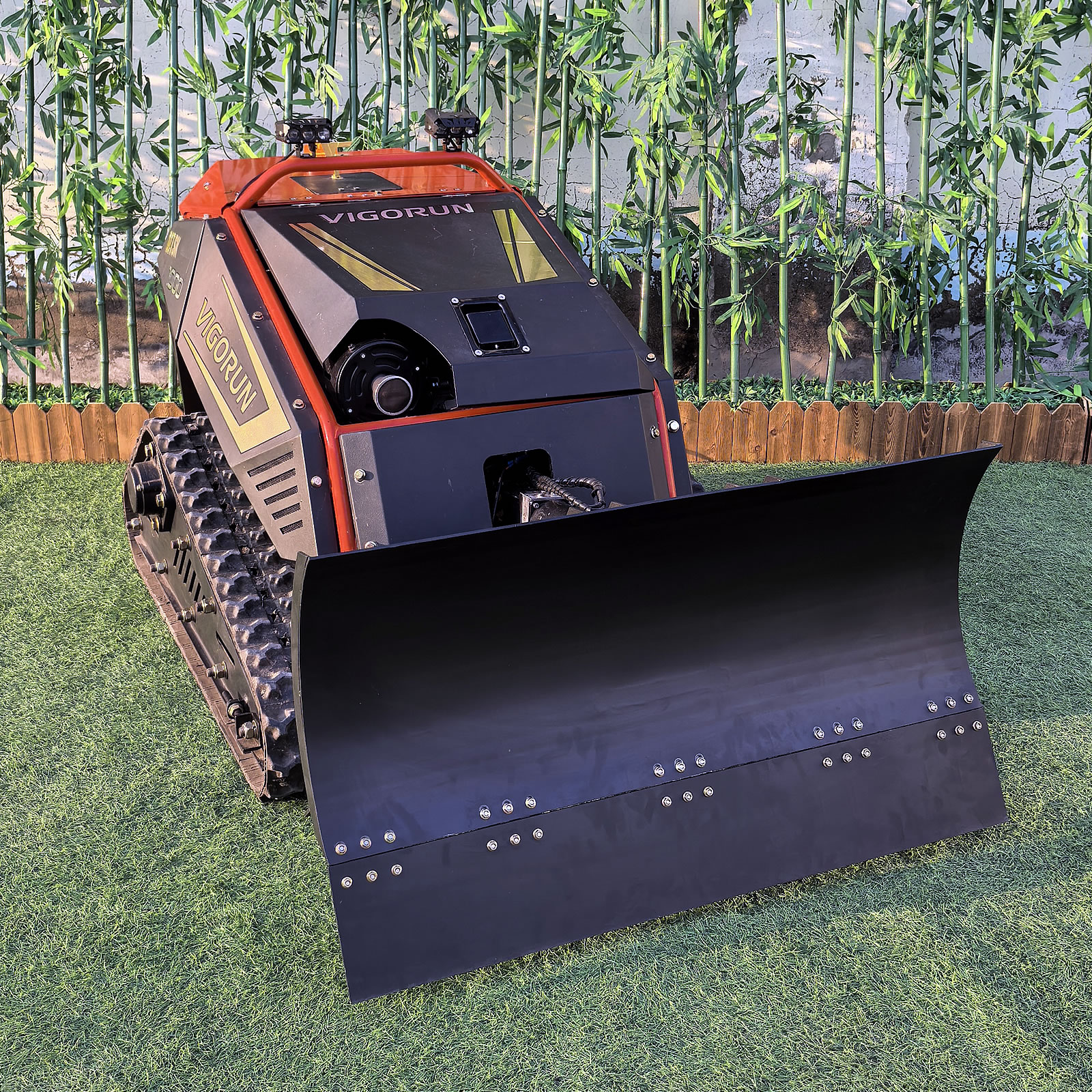
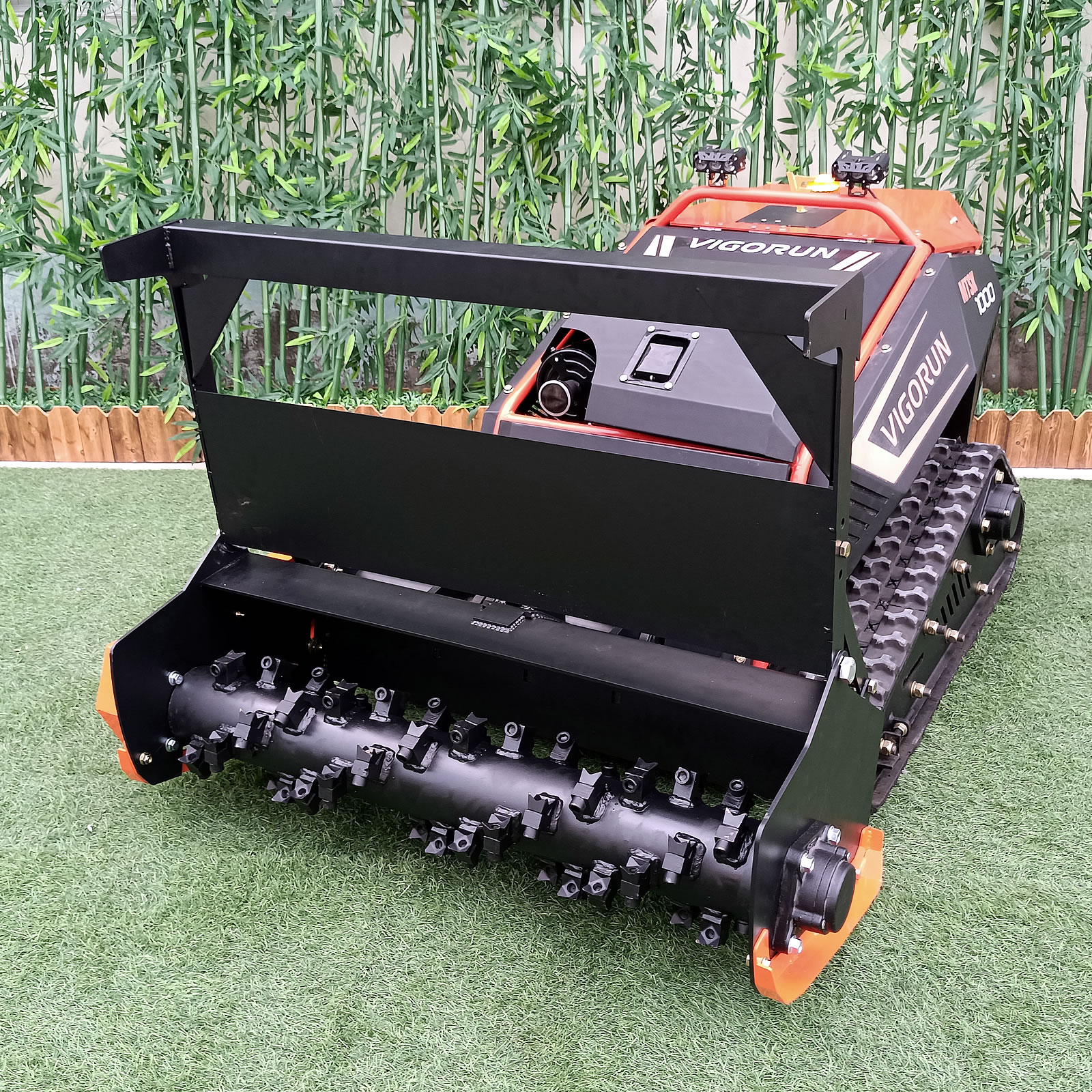
Moreover, the innovative design includes electric hydraulic push rods for remote height adjustment of attachments, allowing for seamless transitions between different tasks. This adaptability is vital for tackling various terrain types, ensuring optimal performance whether in dense vegetation or snowy conditions.
The intelligent servo controller plays a crucial role in maintaining smooth operation. By precisely regulating motor speed and synchronizing the left and right tracks, the mulcher travels in a straight line without constant adjustments. This feature not only reduces operator workload but also minimizes risks associated with over-correction, particularly on steep slopes.
